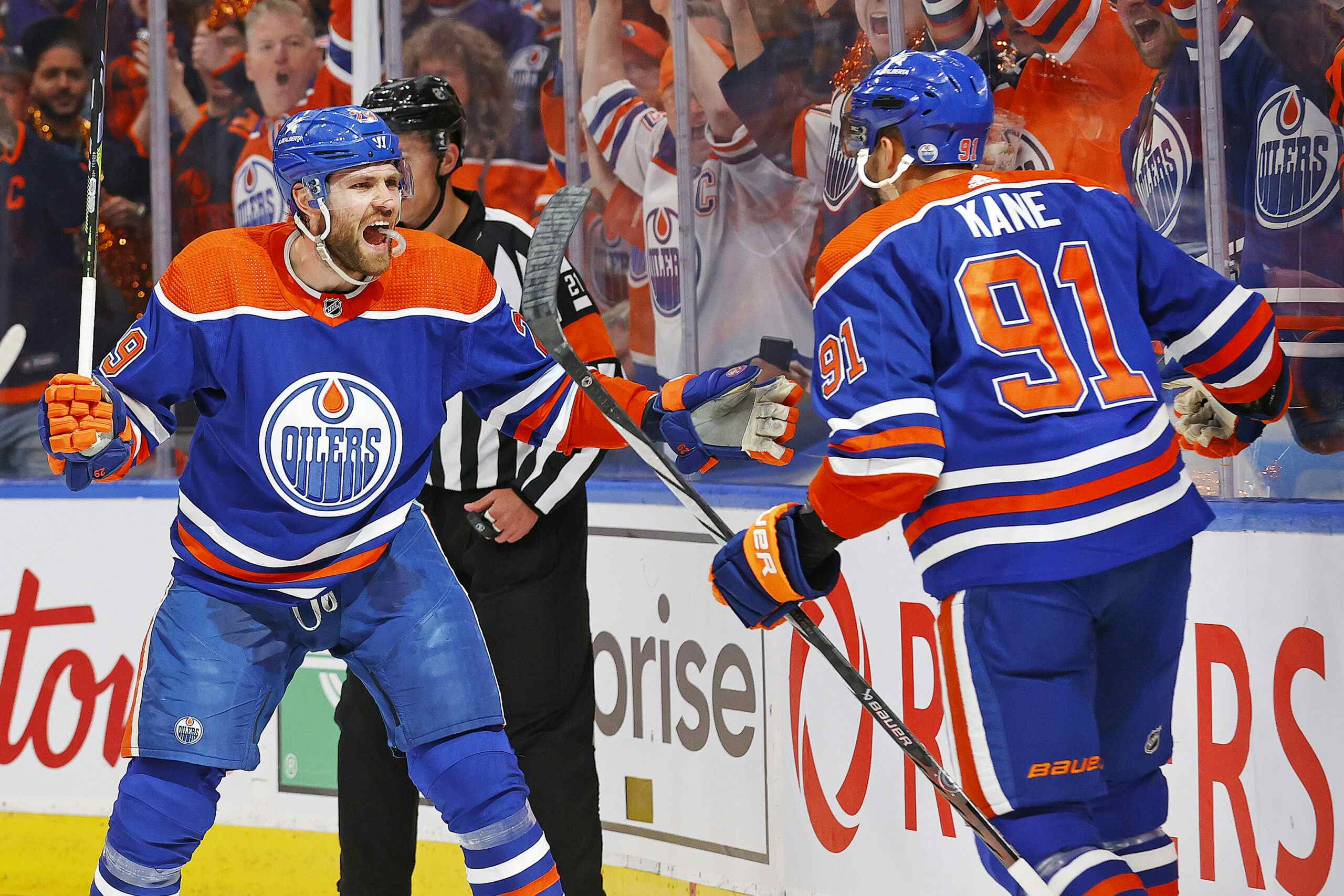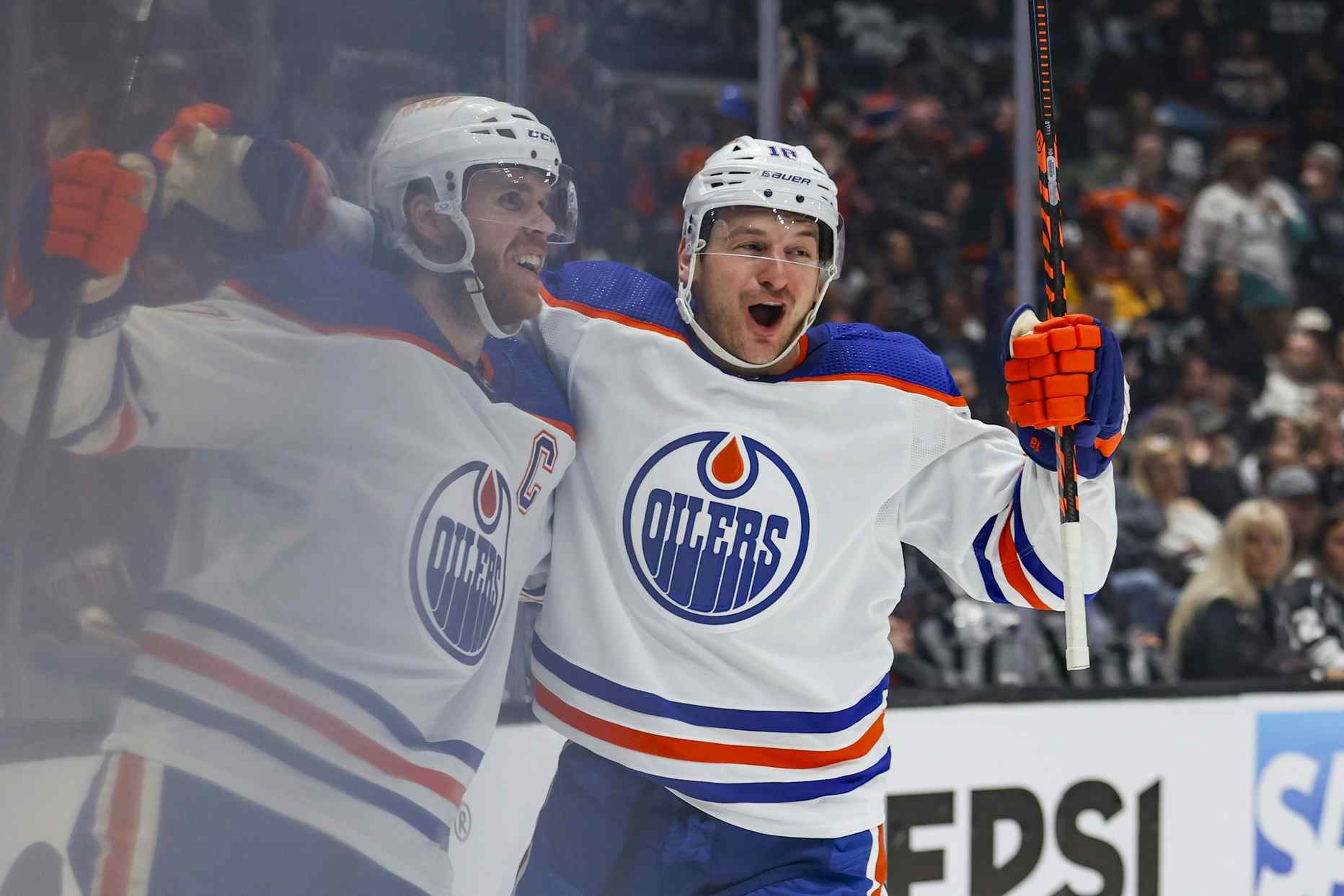It’s a new economy

If new contracts handed out to Anaheim Ducks forwards Ryan Getzlaf (earlier this month) and Corey Perry (last night) are any indication, the economics of signing a star player under the new collective bargaining agreement are going to be significantly different than they were under the old one.
The new order of things is something that is being noticed in the upper echelons of team management, at least if the veteran executive quoted by the Edmonton Journal’s Jim Matheson on Sunday is any indication:
A well-respected, longtime NHL executive, raising his eyebrows at Anaheim giving centre/captain Ryan Getzlaf a whopping $8.25 million a year in a new eight-year deal: “That’s almost as much as Crosby’s getting (on average).” Still not sure why Perry hasn’t just signed the identical $66-million contract. They are tied at the hip, aren’t they? Perry, I hear, goes home to Ontario every year so not married to California like Getzlaf is.
While many speculated that Perry might be interested in spending his seasons a little closer to Ontario, he ultimately did sign a very similar contract to Getzlaf, one worth $69 million, with the Ducks on Monday night.
The question, though is this: why are (admittedly excellent) players like Perry and Getzlaf getting as much per year as Crosby?
The Answer: They Aren’t, Really
While a breakdown of Perry’s deal wasn’t available while I was writing this, a quick comparison of Crosby to Getzlaf shows that there really isn’t much to compare. Over the eight years that Getzlaf is under contract, Crosby is going to earn a little more than $20 million additional dollars than the Ducks’ captain.

After Getzlaf’s contract ends, Crosby still has another year of his deal at $9 million. Only in the summer of 2022 – at the age of 35 – does Crosby’s annual salary drop to $3 million per year.
Despite the similarities in cap hit, Crosby’s deal is better in two highly significant ways for the player: the front-loading means that he’ll out-earn Getzlaf by a sizable margin in the mid-term, and the length of the deal offers him security against injury, something that has real value to any NHL player and especially one with a history of concussion.
But Crosby’s deal is also better for the Pittsburgh Penguins in terms of cap management. The back-diving in later years means that Crosby’s deal is more easily fit under the cap than it would be if it ended after eight years as currently structured (the cap hit would be more than $2 million higher). In later years, when Crosby’s cap hit is higher than his salary, the cap will also presumably be higher (and assuming no major drop-off, Crosby will still be worth the money).
The Ducks can’t negotiate a similar deal with Getzlaf now, though. The new CBA limits the contract term to eight years – it would have been seven for a team other than the Ducks – and variance caps prevent similar back-diving even if it weren’t for the term limits. So the Ducks don’t have the option of getting Getzlaf under the salary cap at a modest cap hit – the cap hit must more accurately reflect what he’s being paid. This is almost certainly going to be the new normal for players in the Getzlaf/Perry range – higher cap hits on (relatively) shorter deals. It’s not that they’re being paid the same as Crosby, it’s just that teams now have more difficulty finessing the cap hit.
Recently around the Nation Network
- NHL Numbers: Anaheim commits to Perry; probably a bad move
- Flames Nation: Calgary at the deadline
- Jets Nation: Trade Target – Nikolai Kulemin
- Leafs Nation: The absurdity of Colton Orr
- Willis: The defence
- Gregor: Oilers weekend wrap
- Willis: Thanks for that, Sergei Kostitsyn
- Lowetide: You make the call!
- Willis: Oilers’ new practice lines
- Follow Jonathan Willis on Twitter
Recent articles from Jonathan Willis





